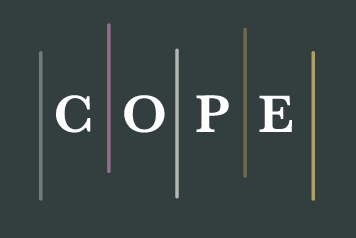Muslim Minorities in Laos: Identity and Integration
DOI:
https://doi.org/10.58355/maqolat.v3i3.159Keywords:
Social Identity, Political Identity, Integration, Muslim Minority, Laos, EthnicityAbstract
This article explores the complex processes of social and political identity formation among Muslim minority communities in Laos, a country marked by its ethnocultural diversity and governed under a single-party socialist regime. These communities—including descendants of South Asian and Southwest Chinese immigrants, Cham-Khmer Muslims from Cambodia, as well as indigenous converts from groups such as the Lao Loum, Khmu, and Hmong present a compelling case for understanding minority integration in a politically and religiously restrictive environment. Drawing on more than six years of fieldwork, the author utilizes qualitative data collected through interviews, focus group discussions, and site surveys to examine the lived experiences, challenges, and evolving identities of these under-researched populations. The study was conducted under significant constraints due to limited access to official demographic data, shaped by national security policies and restrictions on the dissemination of religious information. Furthermore, the data collection period overlapped with the COVID-19 pandemic, adding considerable obstacles to field research. The article pursues two primary objectives: (1) to investigate the construction of social identity among Muslim minorities in Laos, and (2) to analyze how their political identities are shaped in relation to the Lao state. It highlights the interplay between internal factors (such as ethnicity, religious practices, political regime, and demographic policies) and external influences (including transnational Islamic discourse, media exposure, and socio-economic conditions) in shaping identity formation. The diversity of ethnic origins is shown to produce varied expressions of Islam, while the concept of the Ummah fosters a shared sense of belonging across different jurisprudential traditions. This work offers a foundational contribution to the limited body of knowledge on Muslim minorities in Laos and aims to support future academic inquiry into the religious, political, and social dynamics of ethnic and religious minorities in Southeast Asia.
Downloads
References
BBC News. (2021, June 9). Laos Profile – Timeline. Retrieved from https://www.bbc.com/news/world-asia-pacific-15355605.
Evans, G. (2002). A Short History of Laos: The Land in Between. Chiang Mai: Silkworm Books.
Farida, S. (2011). Muslim Political Role of Pathan Muslims in the Southeastern Part of Thailand and Vientiane Province, Lao People's Democratic Republic. Doctoral dissertation, Surin Rajabhat University.
Farouk, O., & Yamamoto, H. (2008). Islam at the Margins: The Muslims of Indochina. Kyoto: Center for Integrated Area Studies, Kyoto University.
Forbes, A. D. W. (1997). The Role of Hui Muslims in the Yunnanese and Burmese Insurgencies (1948–c. 1990). Journal of Southeast Asian Studies, 28(1), 100–118.
Gunawan, H. (2012, October). Islam dan Masjid di Laos. Retrieved from https://bujangmasjid.blogspot.com/2012/10/masjid-azhar-vientiane-laos.html.
Henley, D. (2001). Muslims of Vientiane. Aramco World, 48–49, 45–47.
Hogan, J. P. (2005). Cultural Identity, Pluralism, and Globalization: Vol. 1. Cultural Pluralism and Democratic Freedom. Council for Research in Values and Philosophy.
Lebar, F. M. (2014). Observations on the Movement of Khmu into North Thailand. Journal of the Siam Society, 53, 61–79.
Maluleem, I. (1995). Ethnic Groups in Thailand: Thai Muslims of Pathan Descent. Sirindhorn Anthropology Center, 5–9.
Michaud, J. (2006). Historical Dictionary of the Peoples of the Southeast Asian Massif. Maryland, USA: Scarecrow Press, Inc.
More, J. B. P. (1997). The Political Evolution of Muslims in Tamil Nadu and Madras, 1930–1947. Hyderabad, India: Orient Longman.
Nathan, L. (2021, June 25). In Deep: A (Brief) History of Laos. Retrieved from https://www.butterfield.com/get-inspired/deep-brief-history-laos.
Ovesen, J. (2019). Indigenous Peoples and Development in Laos: Ideologies and Ironies. Moussons, 69–97. Retrieved from http://moussons.revues.org/2589.
Pairaudeau, N. (2009). Indians as French Citizens in Colonial Indochina, 1858–1940. University of London School of Oriental and African Studies Department of History, 16–17.
Pandian, J. (1987). Caste, Nationalism and Ethnicity: An Interpretation of Tamil Cultural History and Social Order. Popular Prakashan.
Parthasarathi, P. (2001). The Transition to a Colonial Economy: Weavers, Merchants, and Kings in South India, 1720–1800. Cambridge University Press.
Phou Bia. (n.d.). Retrieved April 23, 2022, from https://www.peakbagger.com/peak.aspx?pid=10962.
Rakow, R. M. (1992). Lao and Laotian. Center for Southeast Asian Studies, School of Hawaiian, Asian and Pacific Affairs, University of Hawaii, 32.
Sasongko, A. (2017). Muslim Laos Bertahan di Tengah Rezim Komunis. Retrieved from https://republika.co.id/berita/oqchx2313/muslim-laos-bertahan-di-tengah-rezim-komunis.
Sikand, Y. (2008a). Beyond the Mekong: Indian Muslims in Laos. Retrieved from http://twocircles.net/2008aug13/beyond_mekong_indian_muslims_laos.html.
Sikand, Y. (2008b). Hidden Beyond the Mekong: Muslims in Laos. Retrieved from https://en.qantara.de/content/muslims-in-laos-hidden-beyond-the-mekong.
Sisouphanthong, B., & Taillard, C. (2000). Atlas of Laos: Spatial Dimensions of the Economic and Social Development of the Lao People's Democratic Republic. National Statistical Centre, State Planning Committee of Lao PDR.catalog.ihsn.org
Soontornpasuch, S. (1998). The Heterogeneity of the Muslim World. Songklanakarin Journal of Social Science and Humanities, 4(1), 48–49.
Tschacher, T. (2001). Islam in Tamil Nadu: Varia. Halle (Saale): Institut für Indologie und Südasienwissenschaften der Martin-Luther-Universität Halle-Wittenberg.
Wang, L. (2006). Hui Yunnanese Migratory History in Relation to the Han Yunnanese and Ethnic Resurgence in Northern Thailand. Japanese Journal of Southeast Asian Studies, 44(3), 337–358.
Downloads
Published
How to Cite
Issue
Section
License
Copyright (c) 2025 Wan Idris Paduka

This work is licensed under a Creative Commons Attribution 4.0 International License.






















